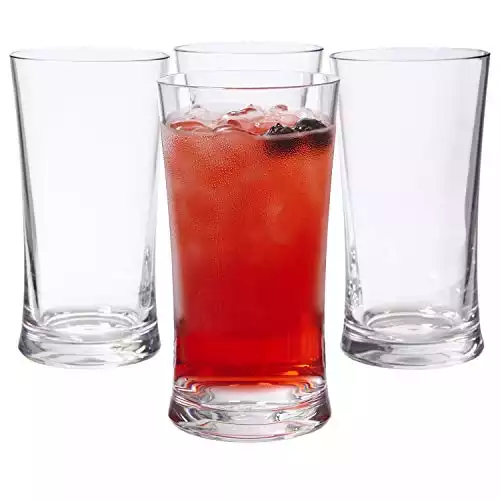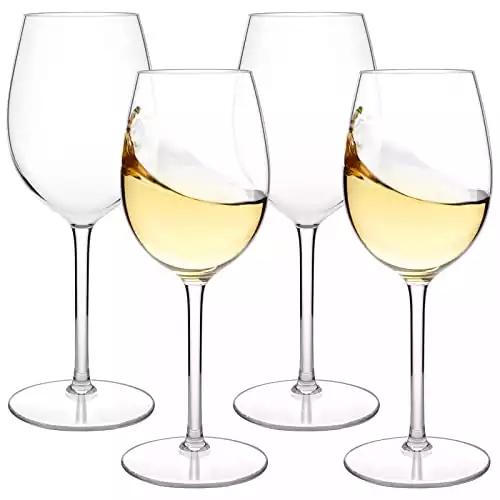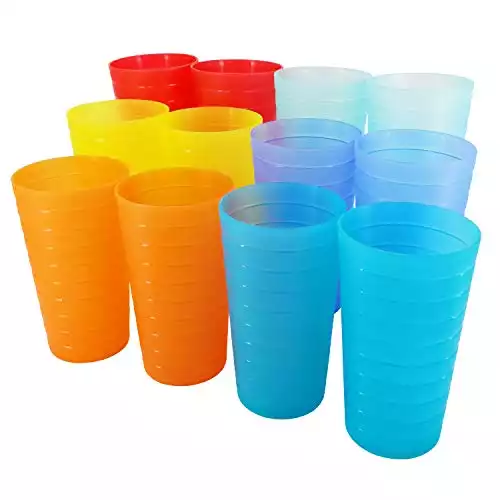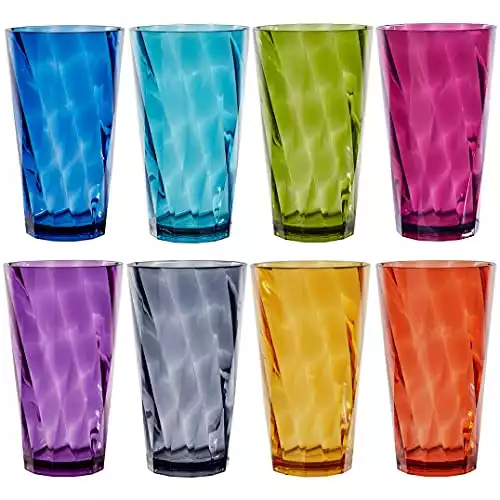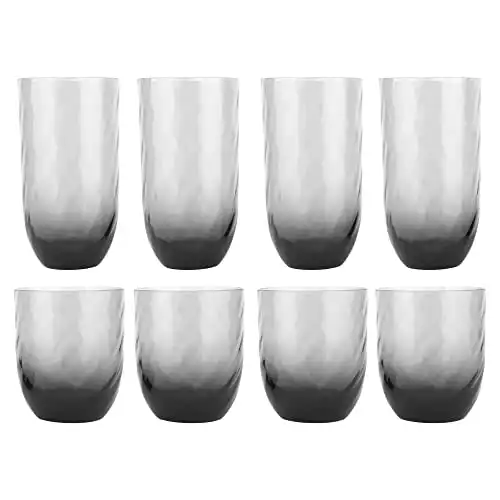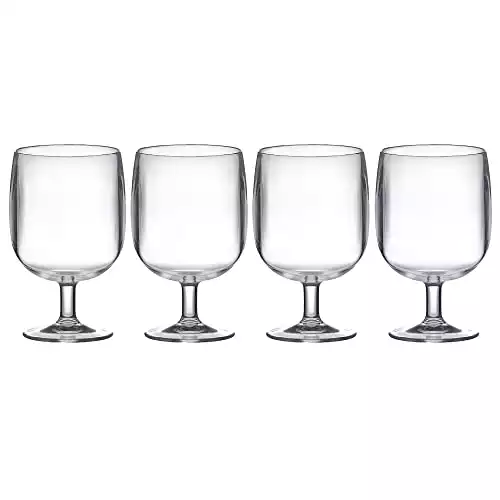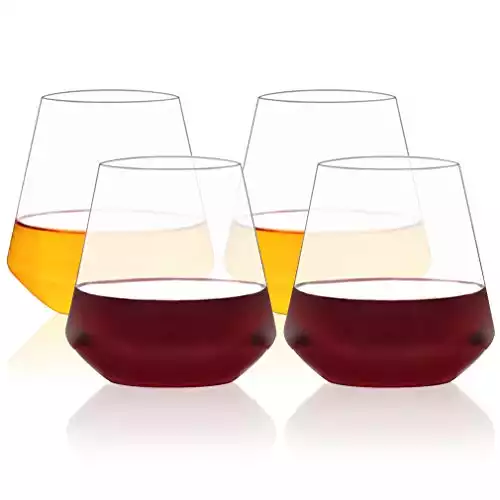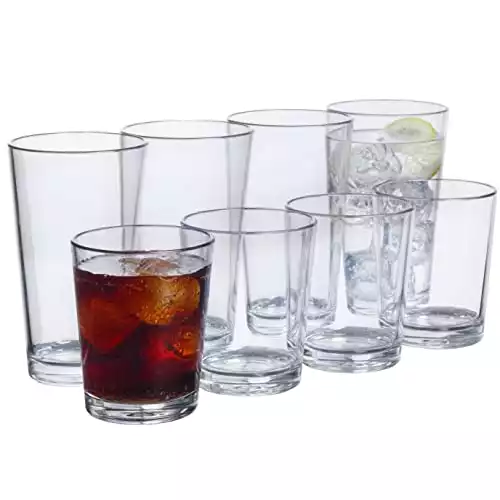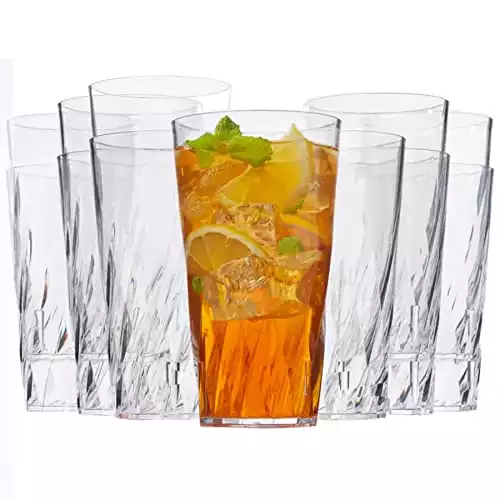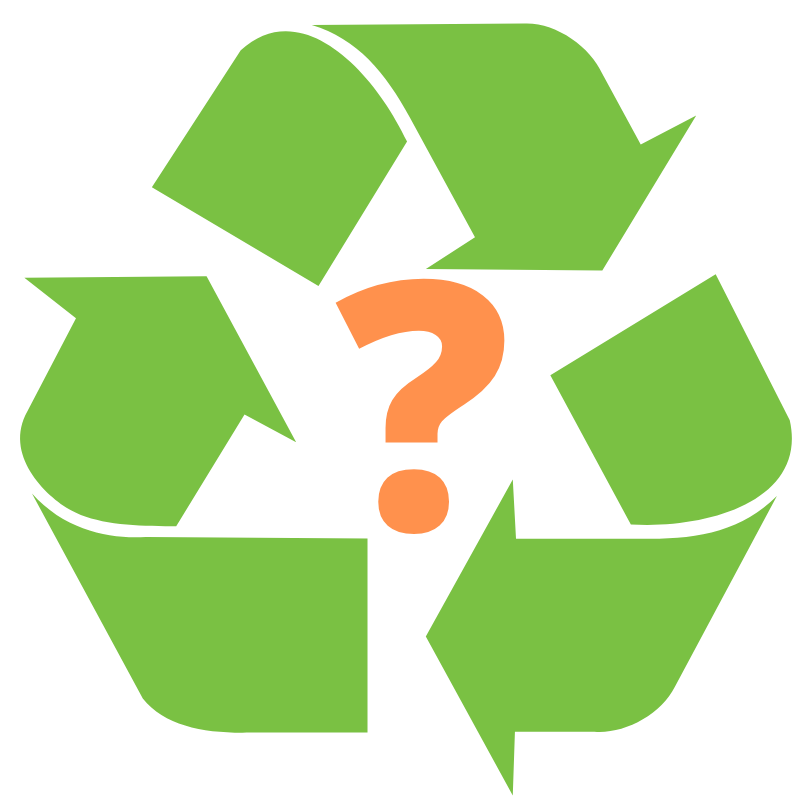
The numbers 1-7 that appear in the center of the recycling symbol on most plastic items are plastic recycling numbers. These have been in use since 1988, when the Society of Plastics Industry (SPI) created a simple 1-7 numbering system, called SPI codes, to help identify and sort various plastics for recycling.
In recent years, some news outlets and health experts have advised people to avoid #7 plastics with concerns they contain the chemical Bisphenol A (BPA). The jury is still out on the issue of BPA, but one thing is certain—not all #7 plastics contain BPA. So, that guidance is incorrect!
Here’s a look at the meaning behind plastic recycling numbers, plus tips to help you spot BPA-free items that display the #7.
Which Plastic Recycling Numbers are BPA-Free?
Plastic recycling codes 1, 2, 3, 4, 5, 6 & many #7 items are BPA-free. When it comes to
BPA-free #7 plastics used to make
Top-Rated BPA-Free Plastic Drinkware Picks
Michley Red Wine Glasses Set of 4, 18 oz Unbreakable Tritan Plastic
Plastic Tumblers Unbreakable | BPA Free | Set of 12 | 22-ounce | Mix Colors
Optix 20-oz Plastic Glasses in SAN Plastic - Set of 8
Classic Stackable Plastic Acrylic Wine Glasses | Set/4 | 12 oz
Michley Stemless Wine Glasses | Clear Tritan Plastic | BPA-free | 17oz | Set of 4
#7 Recycling Code At a Glance
The #7 plastic recycling code is a catchall for the many different types of plastics not commonly collected in recycling programs. Tried-and-true plastic products, including many BPA-free
The same goes for the new eco-friendly biodegradable bio-plastics made from cornstarch and compostable blends that combine polypropylene or melamine with bamboo or wheat straw. These carry the #7.
Simply put, polycarbonate is just one of the many types of “other” plastic that carry # 7. Any article or resource that says all Code 7 items contain BPA is misleading and their authors need to do more homework. They simply have it wrong.
Plastic Recycling Numbers Explained
Here’s a quick look at the meaning behind each of the plastic recycling numbers 1 through 7.
Recycling #1: Polyethylene Terephthalate Plastics (PET or PETE)
- Where #1 plastics are used: Commonly used for single-use disposable plastic items including plastic water bottles, take-out and grocery food containers, beverage bottles, and condiment containers.
- How to recycle: #1 plastics are commonly collected in residential and community recycling programs.
- Recycled uses: New bottles and containers, polar fleece, furniture, and carpet textiles.
- BPA-free plastic: Yes
Recycling #2: High-Density Polyethylene Plastics (HDPE)
- Where #2 plastics are used: Commonly used for more durable disposable plastic items, including milk jugs, detergent bottles, cleaning products, motor oil, and durable multi-use disposable food containers.
- How to recycle: #2 plastics are commonly collected in residential and community recycling programs.
- Recycled uses: New food and household containers and bottles, plastic lumber for fencing, outdoor furniture, disposable pens.
- BPA-free plastic: Yes
Recycling #3: Vinyl or Polyvinyl Chloride Plastics (V or PVC)
- Where #3 plastics are used: Clear disposable food bottles for cooking oils and mouthwash, blister packaging, plastic food wrap, soft plastic children’s toys, plumbing products, and garden hoses.
- How to recycle: Rigid #3 plastics such as bottles and blister packaging are collected in some residential and community recycling programs.
- Recycled uses: #3 plastics are more difficult to recycle, but can be ground into pellets to make new PVC goods.
- BPA-free plastic: Yes, but believed to contain phthalates, so best to avoid #3 plastics in children’s products.
Recycling #4: Low-Density Polyethylene Plastics (LDPE)
- Where #4 plastics are used: Plastic grocery bags, dry cleaning bags, stretch and shrink wraps, and bread bags.
- How to recycle: Many grocery stores have grocery bag recycling containers, but these items aren’t typically collected in residential and community recycling programs.
- Recycled uses: #4 plastics are recycled into plastic lumber, commercial floor tiles, and trash can liners.
- BPA-free: Yes
Recycling #5: Polypropylene Plastic (PP)
- Where #5 plastics are used: This tough plastic is a workhorse and can be found in both disposable and reusable food containers,
plastic tableware and tumblers, drinking straws, ice chests, buckets, bottle tops, and the list goes on. - How to recycle: #5 plastics are commonly collected in many residential and community recycling programs.
- Recycled uses: #5 plastics are recycled into
plastic tableware and cups, outdoor rugs, landscaping products, and household items such as cleaning tools and storage bins. - BPA-free: Yes
Recycling #6: Polystyrene Plastic (PS)
- Where #6 plastics are used: Commonly called styrofoam, polystyrene is used to make egg containers, food take-out boxes, ice chests, foam cups, shipping peanuts, foam insulation, and construction materials.
- How to recycle: #6 plastics are recyclable but not widely collected yet, so it’s best to ask your recycler before placing them in the recycle bin. Some Mailboxes Etc. and UPS Store shipping outlets will accept and reuse clean foam peanuts.
- Recycled uses: #6 plastic wastage is generally recycled at an industrial level into new containers and PS items.
- BPA-free: Yes
Recycling #7: Other (Catchall for all other plastics)
- Where #7 plastics are used: These plastics tend to be more durable than disposable plastics and are found in reusable plastic dishes and drinkware, home decor items, bulletproof glass, reusable food containers, and five-gallon water jugs.
- How to recycle: Since #7 plastic products tend to have long lifespans, they are rarely collected for recycling. However, bio-based plastic items, such as cornstarch-based and bamboo or wheat-infused plastic items are marked PLA and are compostable.
- Recycled uses: #7 plastic wastage is generally recycled at an industrial level into new durable plastic goods.
- BPA-free: Only polycarbonate items are made using BPA, other #7 plastics are BPA-free. These include Tritan, acrylic, melamine, PLA compostables, and plastic blends.
What is BPA and is it Harmful to Humans?
BPA stands for the chemical Bisphenol A, which is used in the manufacture of polycarbonate plastic. Polycarbonate, also known as Lexan®, has been in use for nearly 100 years. It’s an ultra-strong plastic used to make everything from unbreakable tableware and water storage containers to bulletproof glass.
BPA has been a subject of news stories centering on the question of whether or not BPA molecules can leach from polycarbonate containers into food or water in unhealthy amounts.
In truth, the jury is still out on whether or not BPA leaches from polycarbonate products and if it’s harmful to humans. There are many opinions on BPA and health issues in the medical world and the topic is covered in many health-focused blogs. But there’s no definitive scientific answer yet.
Polycarbonate remains an FDA-approved plastic for food use and is still widely used to make commercial and consumer
How You Can Avoid BPA
If BPA issues concern you, the easiest way to avoid BPA plastic products is by not purchasing items made from polycarbonate plastic. Note—this doesn’t mean you have to cut out all #7 plastics. Polycarbonate is just one of many types of plastics in this category.
The best way to avoid polycarbonate items when shopping for
Other Numbers on Plastic Items
Sometimes other numbers appear on the bottom of plastic items, outside or alongside the SPI code in the recycling symbol. These numbers are for manufacturing purposes and can mean anything, such as the number for the mold sleeve, a style number, or factory identifiers. A number NOT in a recycling triangle has nothing to do with recycling the item.
That’s a Wrap
Plastic recycling numbers 1-6 are self-explanatory but the catchall, poor #7, has been getting a bad rap due to the BPA question. If you cut out all #7 plastics in order to avoid BPA, then you’ll miss out on a lot of useful items that are, and always have been, BPA-free. Now you know what to look for, and what to avoid—namely items made from polycarbonate. Keep on recycling—it makes a difference!
Plastic Recycling Number FAQ’s
What are the seven plastic resin codes?
The plastic recycling numbers 1-7 are called SPI codes. These numbers appear in the recycling triangle on plastic items and are used to quickly identify and sort plastics for collection and recycling.
Which plastic codes are recyclable?
Plastic recycling codes 1, 2, 5, and 6 represent plastics that are commonly recycled and collected in residential and community recycling collection programs. #3 and #7 plastics are more difficult to recycle and generally not collected in public programs. #4 plastics are used in plastic grocery bags and those are recycled through grocery store collections.
Is #7 plastic food safe?
Number 7 plastics include acrylic, SAN, Tritan, PLA compostable plastic blends, SAN and NAS blends, and polycarbonate, which are all FDA-approved for food use. There are questions in the health and scientific communities about Bisphenol A, which is used to make polycarbonate. However, the issue hasn’t been settled after more than a decade of study. But polycarbonate is just one of many plastics you’ll find labeled #7. Others are, and have always, been BPA-free.

